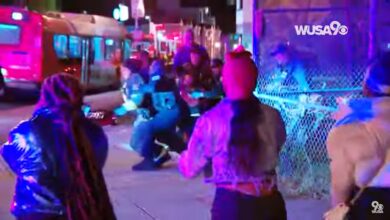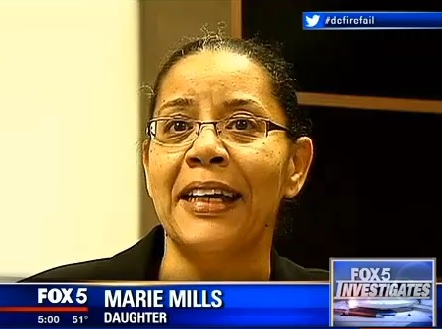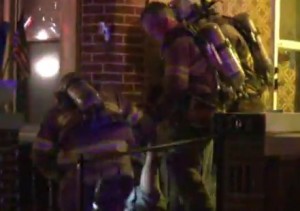Metro again sends passenger filled trains to check for smoke–Corrective action being taken
The smoke was from a small fire started by workers in a room near the L'Enfant Plaza tracks
Looking for a quality used fire truck? Selling one? Visit our sponsor Command Fire Apparatus
Two months after a train controller “violated Metro’s safety rules and procedures for smoke/fire incidents” by sending passengers to check out a possible fire, Metro dispatched at least three trains with passengers to look for smoke following a small fire in at the L’Enfant Plaza Station. In addition, there was a delay of at least 15-minutes in notifying DC Fire & EMS about the February 4 fire. A Metro spokesperson confirms in an email to STATter911 tonight, “There were procedural violations in the response that were deemed to warrant corrective action, which is being administered.”
When asked by STATter911 if Metro’s investigation found that passenger trains should have been halted during this latest incident and if the DC Fire & EMS Department should have been contacted earlier the spokesperson replied, “Unequivocally, yes and yes.”
The fire
The fire occurred in a room off the tracks at the Metro station. The spokesperson says, “A maintenance crew attempted to remove a padlock from an employee locker using a hacksaw. Resulting sparks apparently got into a nearby electrical component, causing the component to generate smoke.”
According to the spokesperson, Metro’s “COO acknowledged that the incident was caused by the use of an unauthorized tool for the task.”
A radio transmission from DC Fire & EMS described the incident this way: “We had workers in a mechanical room throwing sparks that ignited a communications server. They had it out with an extinguisher prior to our arrival.”
Trains with passengers inspect the tracks
Radio traffic (above) from Metro provided by OpenMHz.com shows the first of at least three trains with passengers was sent to check on track conditions at L’Enfant Plaza at 11:56 a.m. The operator of Train 309 was not told what to look for by the controller but to simply perform a track inspection. Similar messages were sent by a controller minutes later to the operators of Train 509 and Train 407. In addition, various supervisors were sent to L’Enfant Plaza. Those supervisors and the L’Enfant Plaza station manager were told to contact the Rail Operations Control Center by phone. There was no mention of fire or smoke in any radio transmissions available to STATter911.
Metro has not said what time the fire occurred. A Metro passenger tweeted at 12:00 p.m. that “L’Enfant Plaza metro smells like burning plastic and looks hazy/smoky. Is metro on fire?” This was followed up at 12:05 p.m. with a picture showing Metro Transit Police Department officers on a platform with a train approaching.
Each train operator reported their track inspections were good and made no mention of smoke or other hazards.
Also police activity on the platform (apologies for poor pic quality) pic.twitter.com/gLNQWVBdhp
— Jogging Josie (@JoggingJosie) February 4, 2020
The December 10 incident
Metro has a long history of sending trains with passengers–known as “revenue trains”–to check out hazards on the rails. That was supposed to come to a halt after a National Transportation Safety Board (NTSB) recommendation following the 2015 fire in a L’Enfant Plaza tunnel that took the life of passenger Carol Glover. Metro changed its standard operating procedures to clarify that trains with passengers will not be used to investigate reports of fire or smoke along the tracks.

STATter911 discovered that Metro apparently violated at least the spirit of that order when a Red Line train with passengers was sent to investigate sparks near the Tenleytown-AU Metro Station on December 10. On arrival, the operator of the train confirmed a fire. Because of errors by the train’s operator, it took more than 50 minutes to reverse the train and get the passengers safely back to the previous station.
On December 20, four days after the STATter911 report, Metro revealed that its “safety rules and procedures for smoke/fire incidents” were violated when a controller failed to order the offloading of passengers before the track inspection was conducted. In addition, an investigation by the Washington Metrorail Safety Commission (WMSC), an independent group charged with overseeing Metrorail safety, found “dangerous dysfunction” inside Metro’s Rail Operations Control Center (ROCC) during the December 10 incident.
The Metro spokesperson points out that one difference between the February 4 fire and the previous incidents is that by the time the track inspections occurred the source of the smoke apparently had already been identified and the fire was out.
The fire department response
It’s unclear how long Metro employees, including police officers, dealt with the small fire and smoke at L’Enfant Plaza before requesting a response from the DC Fire & EMS Department. What is known is that firefighters weren’t dispatched until 12:12 p.m. about 16-minutes after the first track inspection. Radio traffic from OpenMHz.com (above) also confirms that Engine 13 and Truck 10 were dispatched specifically to ventilate smoke and not to help find its source or to extinguish a fire.
In its December 20 statement Metro confirmed it was reviewing its “emergency response notification” procedures following a series of incidents documented by STATter911 showing lengthy delays notifying firefighters about rail emergencies. The delays were not just the fault of Metro workers at ROCC. DC’s 911 center delayed dispatching firefighters in many of the incidents. Radio traffic from a number of rail emergencies reviewed by STATter911 since the February 4 fire shows Metro generally making notifications within two-minutes of incidents being reported to ROCC. That’s an improvement from notifications that sometimes took five-minutes or longer.







